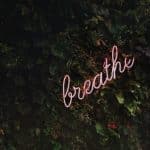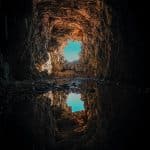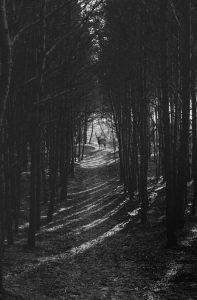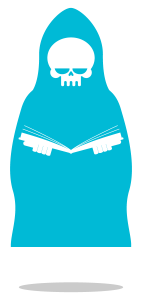What is dread? The hovering of the hand over the shoulder, the gust of wind on the back of the neck, the hairs prickling on your arm right before an eye opens in the darkness. A state of dread is limbo, liminal—it could break open into terror in the next breath, or the next, or the next—
Edith Silva, our 2023 cover artist, and I have been friends since college. I am so excited to be working with her this year, and our Dread cover shows off only a fraction of what she can do. This is my first time dipping my toes into art direction. Knowing the themes in Edith’s work, which combine horror, fantasy, and nature with impeccable attention to detail and bold colorations, I was determined to think outside the box. Edith has described herself as “drawn to the macabre” with her work focused on “both the beauty and unsettling sides of the natural world.”
One of the first classes I took in college was a philosophy class about morbid curiosity. Our professor assigned us several locations in the city to visit and experience. One cloudy day, I tagged along with my roommate and her camera to a curiosity shop. She was there to film a documentary on the shop. I was there because I didn’t have a smartphone and was hopeless at navigating the trains alone. Unfortunately, this also meant that I was stuck there for the entire three hours she was filming, among the piles of rotting taxidermy (a warthog with skin sloughing off, weasels missing eyes, dead mice stuffed and posed for a tea party), jarred kidney stones, knickknacks, antique condoms, bullet casings, and human remains.
Yes, human remains. A full skeleton hung in pride of place, with a name tag attached. The clerk eagerly thrust a skull into my hands before I could protest. He claimed that the shop received them from universities who were finished with bodies donated to science. I couldn’t help but think of Robert Louis Stevenson’s story about grave robbers.
I also couldn’t help but think about wunderkammerns, the cabinets of curiosities from around the 16th century. The dehumanization of crowding skulls in with all these other dead things, disintegrating tablecloths and grinning clown figurines. No matter where I turned, where I looked, in the hours I was in the shop, something new was looking back at me. A psychic weight, or my own paranoia, smothered me until I could barely breathe.
Edith used this feeling of claustrophobia and gave it texture. When talking about the colors and textures, Edith describes her reference pictures:” I pictured vivid potions, flowers and textiles that I’d imagine a witch or a Baba Yaga character would hoard. I liked the parallel of earthy colors mixed with richer tones for the palette. A lot of my references were nature-claimed abandoned areas, cabinets of curiosities, and apothecaries.
So wunderkammerns was the pitch I gave Edith, with Rebecca adding Baba Yaga. We were thrilled with the detail and texture that was included in the final cover image. Both practical and technical effects were used to achieve this filtered look by using “a sheet of watercolor paper brought into the [Photoshop].” We’ll continue searching for something new in 2023 with Edith providing the texture.
You can find Edith on Instagram @bearensembles – her gold leaf work is exquisite!
-
 Maria Schrater First Submission Reader
Maria Schrater First Submission ReaderMaria Schrater is a writer & poet based in Chicago. Her work has appeared in Sycorax Journal and in Air & Nothingness Press’s Wild Hunt and Future Perfect in Past Tense anthologies. She is also an associate editor for Apparition Literary Magazine. She especially loves folklore and mythology and often works with retellings. When not writing, she can be found imitating bird calls in the woods. You can find her on Twitter @MariaSchrater.





